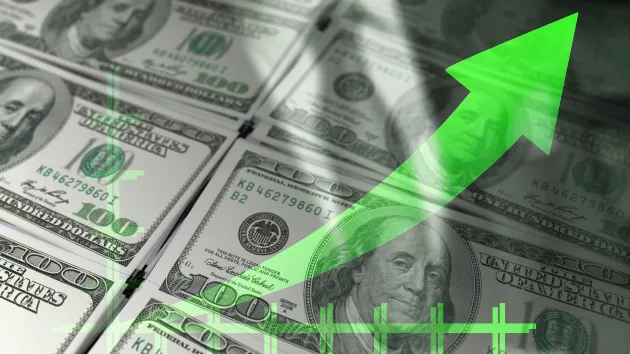
(NEW YORK) — Inflation data to be released on Tuesday will reveal the latest price movements, a key economic signal for central bankers weighing interest rate cuts and voters turning their attention to the general election.
Price increases have cooled dramatically from a peak of about 9%, but inflation still stands more than a percentage point higher than the Federal Reserve’s target rate of 2%.
The latest release from the U.S. Bureau of Labor Statistics is expected to show that consumer prices increased 3.1% over the year ending in February. That finding would leave the annual inflation rate unchanged from the prior month.
Core inflation — a closely watched measure that strips out volatile food and energy prices — is expected to have increased 3.7% over the year ending in February, which would mark a slight cooldown from the previous month.
After progressing steadily lower for much of last year, the inflation rate has stalled in recent months.
The bout of stubborn prices has arrived as the Federal Reserve weighs interest rate cuts. Such a move would start to reverse a near-historic series of rate hikes that dates back to March 2022, when the Fed sought to rein in excessive price increases.
Addressing House members at the Capitol last week, Fed Chair Jerome Powell reaffirmed the Fed’s plans to cut rates this year but cautioned that the central bank first wants to see inflation fall lower.
“The economic outlook is uncertain, and ongoing progress toward our 2% inflation objective is not assured,” Powell told lawmakers.
Interest rate cuts would lower borrowing costs for consumers and businesses, potentially triggering a burst of economic activity through greater household spending and company investment.
But the Fed risks a rebound of inflation if it cuts interest rates too quickly, since stronger consumer demand could lead to an acceleration of price increases.
At its most recent meeting, in January, the policymaking body at the Fed opted to leave rates unchanged. The fed funds rate remains between 5.25% and 5.5%, the highest interest rate since 2021.
Still, the economy has largely defied expectations of a slowdown imposed by elevated borrowing costs.
U.S. job gains far exceeded expectations in February, U.S. Bureau of Labor Statistics data on Friday showed.
The U.S. added 275,000 jobs in February, surpassing predictions of about 200,000 jobs added, but marking a substantial decline from the hiring of roughly 350,000 workers in January, according to Bureau of Labor Statistics data.
The S&P 500 — the index that most people’s 401(k)’s track — reached a record high last week.
Attitudes about the economy have improved in recent months. Consumer sentiment inched lower in February but preserved much of the large gains achieved in previous months, a University of Michigan survey found.
Even so, some areas of the economy have cooled.
Consumer spending, which accounts for roughly two-thirds of U.S. economic activity, fell sharply in January.
Meanwhile, the housing market has slowed substantially due in large part to soaring mortgage rates.
The average interest rate for a 30-year fixed mortgage has soared to 6.88%, rebounding after a steady decline at the end of last year, according to a report from Freddie Mac on Thursday.
Looking back further, that figure has skyrocketed from an average 30-year fixed mortgage rate of 3.76% prior to when the Fed began raising interest rates in March 2022, data shows.
Taken together, economic performance has not shaken the Fed’s steadfast pursuit of lowering inflation down to its goal of 2%, Powell told federal lawmakers last week.
“We remain committed,” Powell said.
Copyright © 2024, ABC Audio. All rights reserved.
